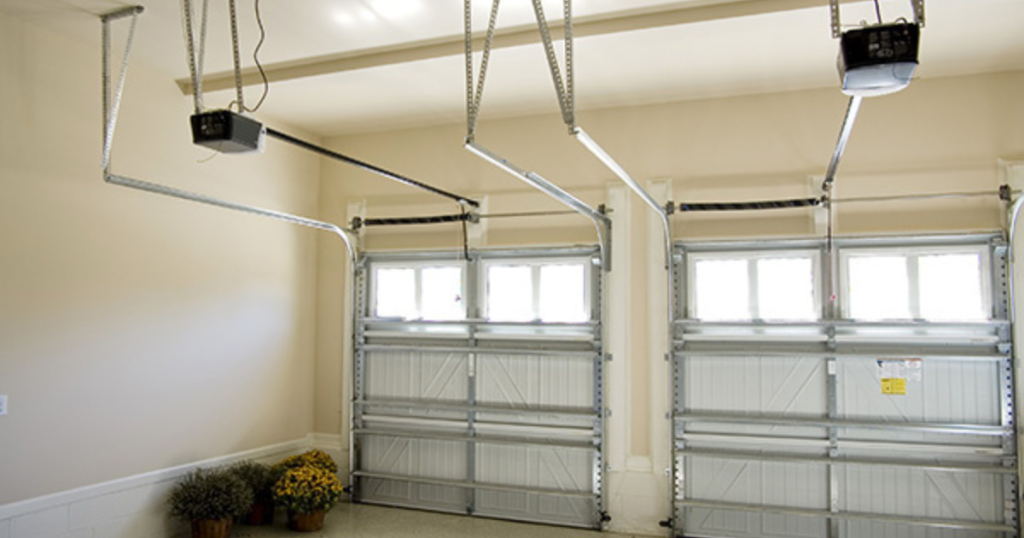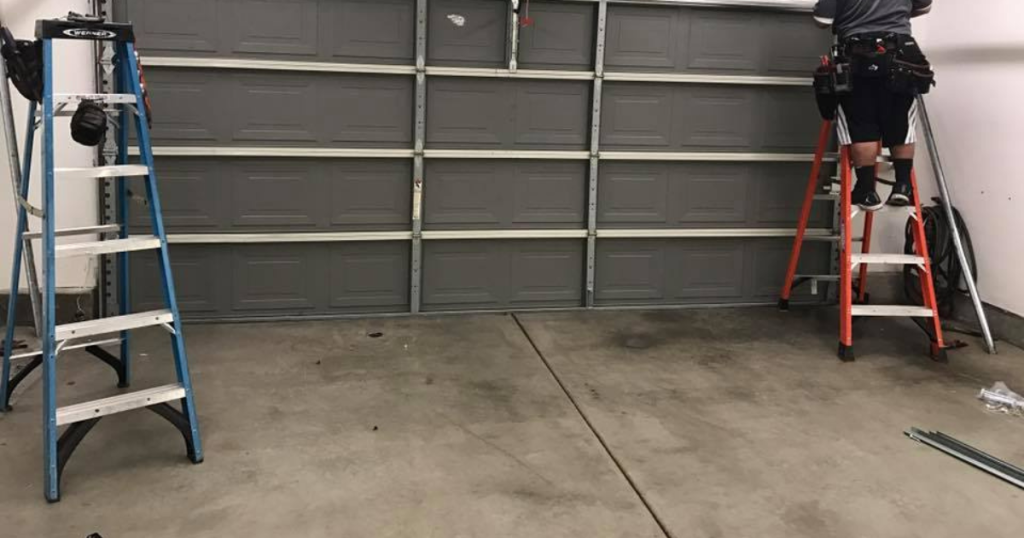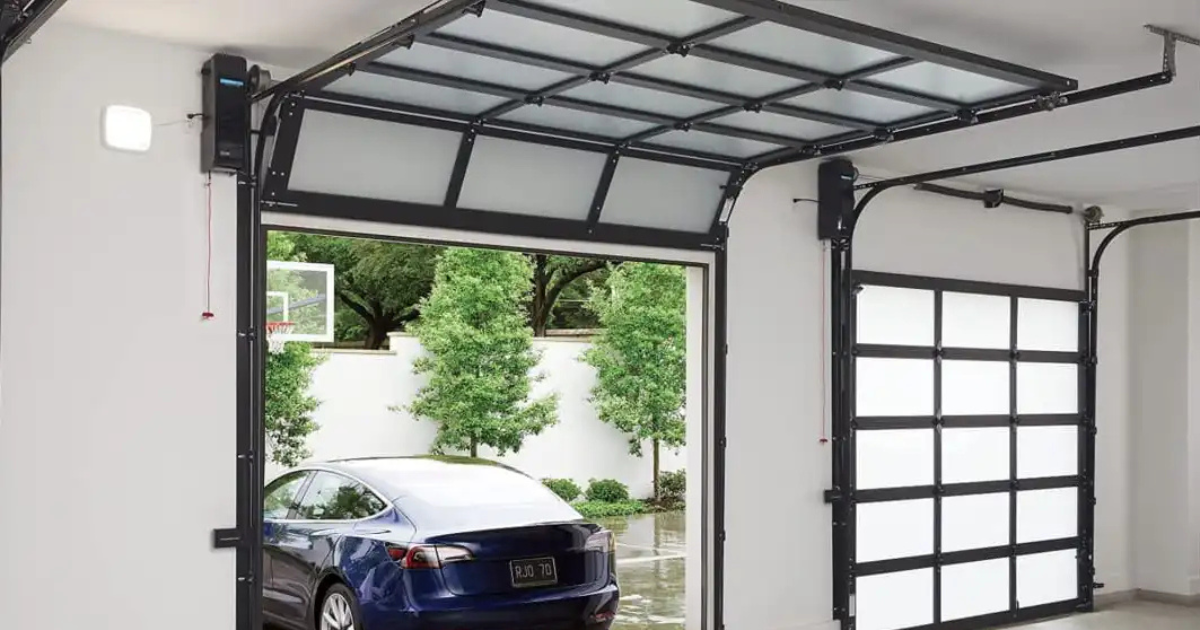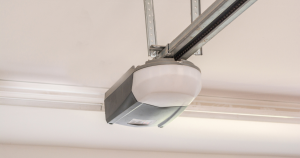Discover the key parts of a garage door, such as panels, rollers, springs, cables, and the opener. They all work as one to keep things running smoothly.
The anatomy of a garage door includes all the main parts that help it open and close safely. The door panels form outside the door and are connected by hinges so they can bend as the door moves. Tracks on both sides guide the door’s movement, while rollers help it slide up and down smoothly.
Springs carry the door’s weight, making it easier to lift. Cables help move the door with the springs. The opener is the motor that powers it, and sensors stop the door if something blocks it. Each part works together to keep your garage door safe and smooth.

How Garage Door Mechanisms Work
The anatomy of a garage door includes several main parts that work together to keep it running smoothly. The panels, springs, tracks, rollers, and the opener are these parts. Each one helps the door move safely and efficiently every day.
Knowing how these parts work can help you better care for your garage door. Small checks and simple fixes now can save you from costly problems later. It can also help you explain things better to a garage door repair expert if something goes wrong.
1. Garage Door Panels
The panels are the easiest part of a garage door to see. These large sections comprise the door, typically constructed from steel, aluminum, wood, or fiberglass.
- Steel panels are durable and low-maintenance.
- Wooden panels offer a classic look but require more upkeep.
- Aluminum and fiberglass are light materials that don’t rust.
2. Garage Door Springs: The Powerhouse
Garage door springs are arguably the most critical part of the anatomy of a garage door. They counterbalance the door’s weight, making it easy to lift manually or with an opener. There are two main types:
- Torsion Springs: Above the door; twist to lift. Durable, smooth, and needs professional handling.
- Extension Springs: On the sides, stretch to lift. Cheaper but wear out faster and can snap.
3. Hinges and Brackets
Hinges link the panels so they can bend when the door opens or closes. Brackets secure the springs, cables, and other hardware to the door.
- Hinges come in different grades, with heavier doors requiring stronger hinges.
- Brackets must be securely fastened to prevent accidents.
4. Cables and Drums
Cables lift the door alongside the springs. They hook onto the bottom brackets, wind around the top drums, and link to the springs.
- Cables are made of high-strength steel and can fray or snap over time.
- Drums hold the cables in place and rotate as the door moves.
5. Weather Stripping and Insulation
It seals the edges of the door to prevent air, moisture, and insects from entering. Insulated doors also help regulate temperature, especially in attached garages.
- Bottom Seal: A rubber strip that prevents water and debris from entering.
- Side and Top Seals: Foam or vinyl strips that improve energy efficiency.
6. Locks and Handles
Though most new garage doors use automatic openers, manual locks provide extra security.
- T-Handle Lock: A manual lock for added protection.
- Automatic Locking Mechanism: Engages when the door closes.
How Tracks and Rollers Help Your Garage Door Run Smoothly
Your garage door needs tracks and rollers to open and close without trouble. Without them, the door would jam or operate unevenly.
1. Tracks
Garage door tracks are strong metal rails, usually made of steel, that guide the door as it opens and closes. They must stay clean, free of dents, and properly aligned. The garage door might get stuck or off track if the tracks bend or move.
2. Rollers
Garage door rollers help the door glide smoothly along the tracks. Nylon rollers are quieter and ideal for homes where noise matters. Steel rollers last longer but make more noise. Choosing the right rollers improves the door’s movement, reduces wear on parts, and boosts safety.
What a Garage Door Opener System Does
Most modern garage doors operate via an automatic opener, which consists of:
1. Motor
The motor is the main part of your garage door opener. It lifts and lowers the door. A powerful motor helps the door move smoothly, especially if it’s heavy. The opener may struggle or stop working completely if the motor wears out.
2. Drive Mechanism
The drive system opens and closes the door using a chain, belt, or screw. Chain drives are strong but noisy, belts are quieter, and screw drives need less maintenance. Choosing the right type affects noise level, speed, and how often you’ll need repairs or adjustments.
3. Remote & Wall Control
You can open and close the garage door with remotes or wall buttons. The remote offers wireless access, while the wall control gives a manual option. Many newer models also work with smartphones, adding convenience and smart home integration to your daily routine.
4. Safety Sensors
Safety sensors are placed low near the garage door, and infrared light is used to spot anything blocking the door. If a person, pet, or object blocks the beam, the door won’t close. These sensors prevent accidents and are required by modern safety standards.
How to Maintain Your Garage Door the Right Way
Understanding the anatomy of a garage door is the first step toward proper maintenance. Here are some key tips:
1. Lubricate Moving Parts
Oil or spray the springs, rollers, and hinges every six months. This helps the door move smoothly and quietly. Use special garage door spray, not WD-40. This small step keeps parts from wearing out and helps your garage door last longer.
2. Inspect Cables and Springs
Look at the cables and springs often. They might break if they look rusty, frayed, or worn out. Don’t try to fix them yourself; they can be dangerous. Call a garage door expert to check or replace these parts if you see a problem.
3. Test Safety Sensors
Put something in the door’s path each month and try closing it. The door should go back up. If not, the sensors might be dirty or not lined up. Wipe them gently and make sure they face each other to keep your door safe.
4. Check Weather Stripping
Look at the rubber strip on the bottom and sides of the garage door. If it has cracks or holes, replace it. Good weather strips remove rain, dirt, bugs, and cold air. It also helps save energy and keeps your garage more comfortable.
5. Tighten Loose Hardware
Garage doors move a lot, and parts like screws and brackets can get loose. Use a tool to tighten them once in a while. This keeps everything in place and helps stop loud noises or problems with the door opening or closing.
When to Call a Garage Door Professional for Help
While some maintenance tasks are DIY-friendly, others require expert handling:
1. Spring Replacement
Garage door springs help lift the door, but are under a lot of pressure. If one breaks, it can snap and hurt someone. Replacing springs is not safe to do yourself. Call a garage door repair expert who knows how to fix them safely.
2. Track Realignment
If the garage door track is bent or not straight, the door might not open properly or get stuck. Fixing it requires careful work and the right tools. A trained technician can fix the track so your door moves up and down smoothly again.
3. Opener Repairs
The garage door opener has electric parts like wires, sensors, and motors. If it stops working, it can be hard to fix. A garage door repair expert can check what’s wrong and fix the opener safely so the door works correctly.

Frequently Asked Questions
What are the parts of a garage door?
A garage door has many parts: panels, hinges, rollers, tracks, springs, cables, and the opener. These all work together to help the garage door open and close. Keeping each part in good shape helps your garage door stay safe, quiet, and easy to use.
What is a garage door mechanism called?
The garage door mechanism is usually called the garage door opener system. It includes the motor, chains or belts, and sensors. This system controls how the garage door opens and closes, ensuring smooth and safe operation. It can function either automatically or manually.
What is the bottom part of a garage door called?
The bottom part of a garage door is called the bottom seal or bottom section. It keeps out water, dirt, and pests. The bottom seal also helps close the gap between the garage door and the floor, keeping your garage clean and well-sealed.
What is the metal around the garage door called?
The metal around the garage door is called the garage door frame or trim. It holds the door in place and helps it stay strong and straight. This metal part also gives the garage door a finished look and keeps everything properly aligned.
What is the strip around the garage door called?
The strip around the garage door is called weatherstripping. It goes along the sides and top of the door to seal gaps. Weatherstripping keeps out wind, rain, bugs, and dust, helping your garage door stay energy-efficient and protecting it from outside elements.
Conclusion
Understanding the anatomy of a garage door is key to keeping your system running safely and smoothly. We help homeowners learn how each part works together, from the panels to the springs. A well-maintained door means fewer problems and better performance every day.
Every garage door part has a job; knowing how they work helps you spot problems early. Worn rollers or weak springs can cause issues. Our team is ready to fix any problem. We offer fast and reliable garage door repair and maintenance to keep your door safe and working correctly.
If you need help or want a complete check-up, call Alachua Door Company at 386-418-0100. We will take care of your garage door and ensure everything works right. We know every part and help keep your door in top shape.
End Note
If you need a trusted company for the best garage door opener, Alachua Door Company is here to help. We offer strong, smooth-working openers that last long. Our team is ready, whether you need a new system or an upgrade. Visit our website to see top choices for your home.
Create your perfect setup using our Design Your Door tool. Check out quality styles from Amarr. Learn from our Blog and Video Gallery. We also do garage door roller replacements and install roll-up doors. We proudly serve Fort White, FL.
Follow us on Facebook and Instagram for updates, ideas, and real project highlights. For help with your garage door opener, visit our Contact Us page to speak with our team. You can also find us anytime on Google Maps for directions and service hours.
Alachua Door Company
18238 NW US Hwy 441, High Springs, FL 32643, United States
+13864180100




